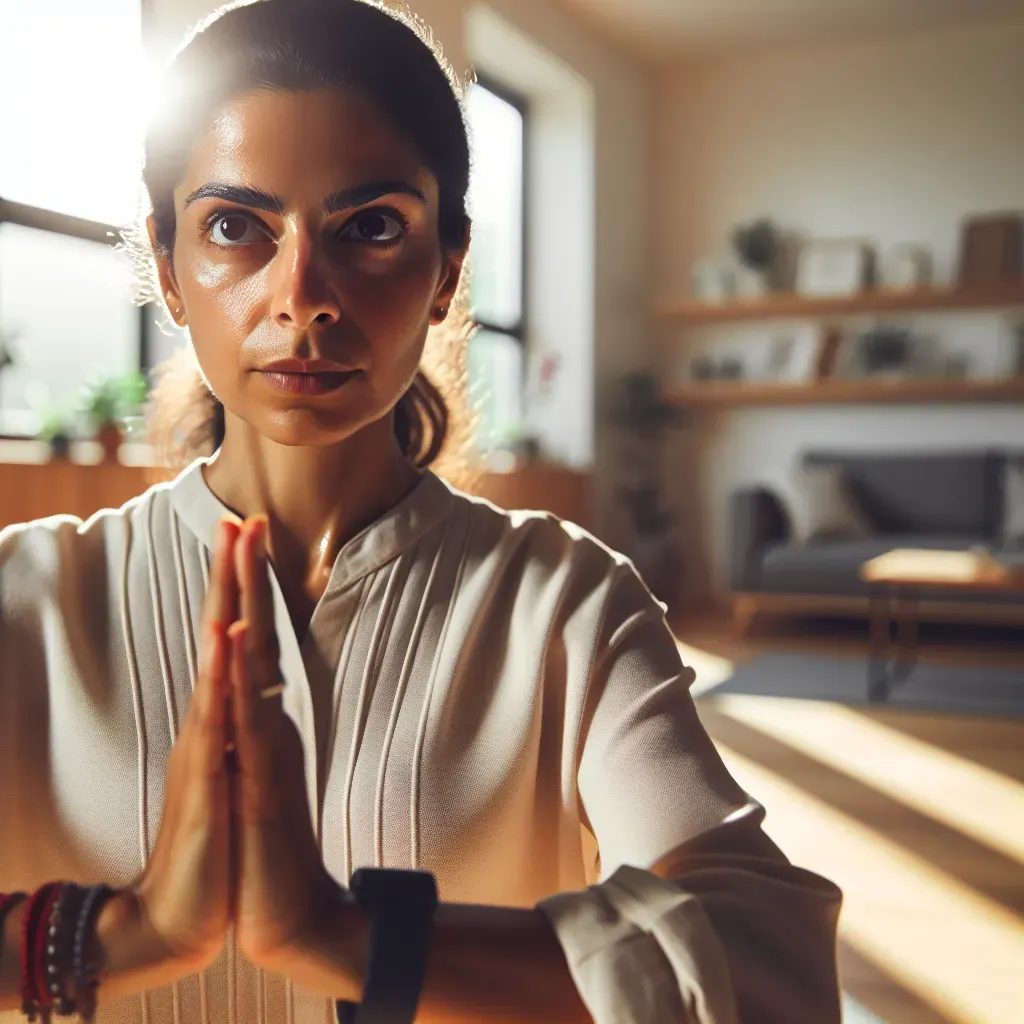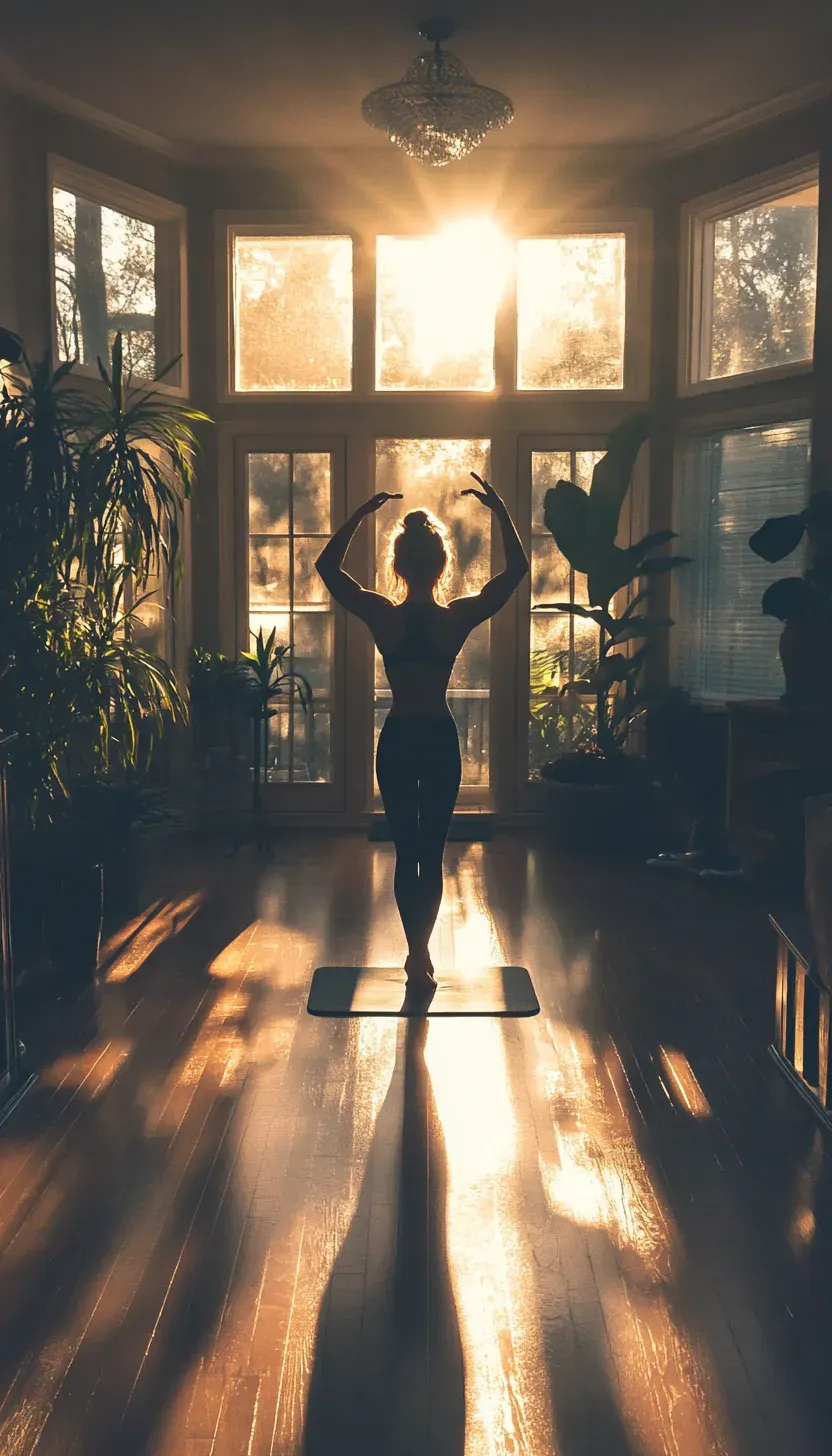What is Dynamic Yoga? A Complete Guide to This Energizing Practice
Table Of Contents
- Introduction to Dynamic Yoga
- Key Principles of Dynamic Yoga
- Benefits of Dynamic Yoga
- How Dynamic Yoga Differs from Other Yoga Styles
- What to Expect in a Dynamic Yoga Class
- Tips for Beginners Starting Dynamic Yoga
- Dynamic Yoga at Home: A Beginner’s Guide
- Myths About Dynamic Yoga
- Who Can Practice Dynamic Yoga?
- Final Thoughts: Why You Should Try Dynamic Yoga
Introduction To Dynamic Yoga

Dynamic yoga is a modern and invigorating approach to traditional yoga that emphasizes flowing, movement-based sequences.
Unlike static yoga styles, where poses are held for longer durations, dynamic yoga focuses on continuous movement, linking one pose to the next in a seamless and rhythmic flow.
This practice offers a perfect balance of strength, flexibility, mindfulness, and energy, making it appealing to a wide range of practitioners.
In this article, we’ll dive deep into what dynamic yoga is, how it differs from other yoga styles, its benefits, and what you can expect in a dynamic yoga class. Whether you’re a beginner or an experienced yogi, this guide will provide you with everything you need to know about dynamic yoga.
What Is Dynamic Yoga?
Dynamic yoga is a type of yoga that focuses on movement, energy, and flow. The word "dynamic" refers to motion and change, which are at the heart of this practice. In a dynamic yoga session, practitioners move through a series of poses (asanas) in a flowing sequence, often synchronized with their breath.
The movements are typically more energetic and fluid compared to other yoga styles like Hatha or Yin yoga, making it a great option for those looking to boost their physical fitness while still enjoying the meditative benefits of yoga.
Origins Of Dynamic Yoga
Dynamic yoga is a modern evolution of traditional yoga practices. It draws inspiration from ancient yoga philosophies while incorporating contemporary movement techniques.
It’s influenced by Vinyasa yoga, Ashtanga yoga, and other flow-based practices, which focus on breath-synchronized movement. Over the years, dynamic yoga has grown in popularity due to its adaptable and inclusive approach, making it suitable for people of all fitness levels.
Key Principles Of Dynamic Yoga
Dynamic yoga is built around a few core principles:
- Flowing Movement
- Dynamic yoga prioritizes movement over stillness. Sequences are designed to transition smoothly from one pose to another, creating a "flow" that feels like a dance.
- Breath Awareness
- Each movement in dynamic yoga is closely tied to the breath. Inhaling and exhaling guide transitions, helping practitioners maintain focus and mindfulness.
- Strength and Flexibility
- Dynamic yoga challenges the body by building strength and improving flexibility. The continuous movement helps tone muscles and enhances joint mobility.
- Mind-Body Connection
- This practice emphasizes staying present at the moment, fostering a deeper connection between the mind and body.
- Energy and Vitality
- By combining physical activity with mindful breathing, dynamic yoga boosts energy levels and leaves practitioners feeling revitalized.
How Does Dynamic Yoga Differ from Other Yoga Styles?
Dynamic yoga stands out because of its emphasis on movement and energy. Here’s how it compares to other popular yoga styles:
Hatha Yoga
- Focus: Static poses and relaxation.
- Comparison: Hatha yoga is slower and involves holding poses for longer, while dynamic yoga involves constant movement.
Vinyasa Yoga
- Focus: Breath-synchronized flow.
- Comparison: Dynamic yoga shares similarities with Vinyasa but may include more creative or varied sequences.
Ashtanga Yoga
- Focus: Fixed series of poses.
- Comparison: Dynamic yoga offers more flexibility in sequences, whereas Ashtanga follows a structured progression.
Yin Yoga
- Focus: Long-held passive poses.
- Comparison: Yin yoga is slow and meditative, while dynamic yoga is active and energizing.
Power Yoga
- Focus: Strength and fitness.
- Comparison: Power yoga is physically demanding like dynamic yoga, but dynamic yoga places greater emphasis on flow and mindfulness.
Benefits Of Dynamic Yoga
Dynamic yoga offers numerous benefits for the mind, body, and spirit. Here are some of the key advantages:
1. Improves Physical Fitness
- Builds strength: The continuous movement engages multiple muscle groups, helping to tone and strengthen the body.
- Enhances flexibility: Flowing through poses stretches muscles and improves range of motion.
- Boosts endurance: The active nature of dynamic yoga increases stamina over time.
2. Supports Mental Well-Being
- Reduces stress: Synchronizing movement with breath calms the mind and reduces anxiety.
- Improves focus: The meditative aspect of dynamic yoga enhances concentration and mindfulness.
- Boosts mood: Regular practice releases endorphins, which contribute to a positive mental state.
3. Enhances Energy and Vitality
- The combination of breathwork and movement revitalizes the body, leaving practitioners feeling energized and refreshed.
4. Promotes Weight Management
- Dynamic yoga is a calorie-burning activity that can support weight loss and improve metabolism.
5. Improves Balance and Coordination
- Moving through sequences challenges balance and enhances coordination, which benefits overall mobility.
6. Increases Mind-Body Awareness
- The focus on alignment, breath, and movement fosters a deeper connection to the self.
What To Expect In A Dynamic Yoga Class
If you’re new to dynamic yoga, here’s what you can typically expect in a class:
- Warm-Up
- Classes often start with gentle stretches and breathing exercises to prepare the body and mind.
- Flowing Sequences
- The main part of the class involves flowing sequences that link poses together. These sequences can range from gentle to challenging, depending on the class level.
- Breathwork
- Breathing is emphasized throughout the class to help synchronize movement and promote relaxation.
- Cool-Down
- Classes usually end with a series of calming poses and a short meditation to wind down.
- Adaptability
- Dynamic yoga classes are highly adaptable. Instructors often offer modifications for beginners and advanced variations for experienced yogis.
Who Can Practice Dynamic Yoga?
Dynamic yoga is suitable for almost everyone, regardless of age or fitness level. However, it’s especially beneficial for:
- Active individuals who enjoy movement-based exercises.
- Beginners looking for a fun and approachable entry into yoga.
- Fitness enthusiasts wanting to complement other activities like running or weightlifting.
- Stress-relief seekers who want a physical practice that also calms the mind.
If you have specific health concerns or injuries, consult your doctor or instructor before starting.
Tips For Getting Started With Dynamic Yoga
If you’re ready to try dynamic yoga, here are some tips to help you get started:
Find the Right Class
Look for beginner-friendly classes if you’re new to yoga. Online platforms and local studios often offer a variety of options.
Wear Comfortable Clothing
Choose lightweight, stretchy clothing that allows for free movement.
Use a Yoga Mat
A good-quality yoga mat provides support and prevents slipping during poses.
Stay Hydrated
Dynamic yoga can be physically demanding, so drink water before and after your practice.
Focus on Your Breath
Pay attention to your breathing throughout the session to stay present and relaxed.
Listen to Your Body
Avoid pushing yourself too hard, especially if you’re new to yoga. Take breaks as needed and modify poses if necessary.
Dynamic Yoga At Home: Tips And Resources
You don’t need to attend a studio class to enjoy dynamic yoga. With a little guidance, you can practice yoga at home:
1. Follow Online Classes
Platforms like YouTube and yoga apps offer dynamic yoga videos for all levels.
2. Create a Dedicated Space
Set up a quiet, clutter-free area where you can practice comfortably.
3. Use Props
Blocks, straps, and bolsters can help you modify poses and enhance your practice.
4. Set a Routine
Practicing regularly, even for 10–15 minutes a day, can yield great benefits.
Common Myths About Dynamic Yoga
1. “Dynamic yoga is only for advanced practitioners.”
Truth: Dynamic yoga is accessible to all levels, with modifications available for beginners.
2. “It’s too intense for people with limited flexibility.”
Truth: Flexibility improves over time with consistent practice. Dynamic yoga is adaptable for everyone.
3. “Dynamic yoga isn’t relaxing.”
Truth: While the movements are active, the focus on breathwork and mindfulness makes it deeply calming.
Final Thoughts: Why You Should Try Dynamic Yoga
Dynamic yoga is a versatile and engaging practice that blends movement, mindfulness, and breathwork. Whether your goal is to improve physical fitness, relieve stress, or explore a new form of self-care, dynamic yoga offers something for everyone.
Its flowing sequences, energizing nature, and mental health benefits make it a rewarding experience for practitioners of all levels.
So, what are you waiting for? Roll out your yoga mat, take a deep breath, and step into the world of dynamic yoga. It could just be the life-enhancing practice you’ve been searching for!
Useful Resources
To deepen your understanding of dynamic yoga and explore additional resources, check out these useful websites:
- Yoga Journal offers a wide range of articles, tips, and tutorials for yoga practitioners of all levels, including flow-based practices like dynamic yoga.
- DoYogaWithMe provides free and paid video classes tailored to different styles and experience levels, including dynamic yoga sequences.
- Yoga Alliance is a great resource for finding certified yoga teachers and studios near you, along with educational materials on yoga practices.
These resources are perfect for beginners and experienced yogis looking to expand their knowledge and enhance their practice.
For beginners who want to explore poses. Check-Out Beginner’s Guide To Dynamic Yoga: Energizing Poses And Benefits
People Also Asked
- What is the purpose of dynamic yoga?
- Dynamic yoga aims to build strength, flexibility, and mindfulness through flowing sequences linked to breath.
- How does dynamic yoga differ from Vinyasa yoga?
- While similar, dynamic yoga is more flexible in structure, incorporating creative sequences beyond traditional Vinyasa styles.
- Is dynamic yoga suitable for beginners?
- Yes, with modifications provided, dynamic yoga can be an accessible practice for beginners.
- What are the main benefits of dynamic yoga?
- Dynamic yoga enhances physical fitness, mental clarity, and energy levels while reducing stress.
- Can dynamic yoga help with weight loss?
- Yes, the continuous movement and calorie-burning nature of dynamic yoga can support weight management.
- How long does a typical dynamic yoga class last?
- Classes generally last between 45 minutes to an hour, but some sessions can be longer or shorter.
- Do I need any special equipment for dynamic yoga?
- A yoga mat and optional props like blocks or straps are sufficient for most classes.
- What are the best dynamic yoga poses for beginners?
- Downward Dog, Warrior II, and Cat-Cow are beginner-friendly poses often included in dynamic yoga sequences.
- How can I improve my flow in dynamic yoga?
- Practice synchronizing your breath with movement and focus on smooth transitions between poses.
- Where can I find dynamic yoga resources?
- Online platforms like Yoga Journal, DoYogaWithMe, and YouTube offer excellent dynamic yoga guides and classes.





